Front Page
Abstract
Table of Content
Ch1 Introduction
Ch2.pdf
State of the art topologies and improvements
Introduction
State of the art topologies and issues
Two-switch-forward converter
Phase Shift Full Bridge converter
Half bridge converter
Comparison of three topologies
Issue with hold up time requirement
Asymmetrical half bridge with hold up time design
Phase shift full bridge with hold up time design
Conclusion
Range winding for wide input range
Asymmetrical Winding Asymmetrical Half Bridge
QSW Synchronous Rectification
Synchronous Rectifier for front end DC/DC Converter
QSW Synchronous Rectifier
Summary and issues
Ch3.pdf
Integrated Power Electronics Module
Introduction
Integrated Power Electronics Module for Front end DC/DC
Active IPEM
Passive IPEM
Performance evaluation
Summary
Ch4.pdf
LLC Resonant Converter
Introduction
Three traditional resonant topologies
Series resonant converter
Parallel resonant converter
Series parallel resonant converter
LLC resonant converter
Operation of LLC resonant converter
Design of LLC resonant converter
Design of power stage parameters
Design trade offs:
Test results
Loss comparison
Extension of LLC resonant topology
High frequency operation
Summary
Ch5.pdf
Improvements of LLC Resonant Converter
Magnetic design for LLC Resonant Converter
Discrete design and issues
Integrated magnetic design
Real transformer with leakage and magnetizing inductance
Integrated magnetic design A
Extraction of Common Structure for Integrated Magnetic
Integrated magnetic design B for LLC resonant converter
Test Result
Summary
Over load protection for LLC resonant converter
Intrinsic response of LLC resonant converter to over load condition
Method 1: Increasing Switching Frequency
Method 2: Variable frequency control plus PWM Control
Method 3: LLC resonant converter with clamping diode
Integrated power electronics module for LLC
Summary
Ch6.pdf
Small signal analysis and control design of LLC converter
Introduction
Extended Describing Function analysis
Time domain simulation method
Small signal characteristic of LLC resonant converter
Impact of load variation on small signal characteristic
Impact of circuit parameters
Impact of output capacitance
Impact of magnetizing inductance
Impact of resonant tank impedance
Test verification
Compensator design for LLC resonant converter
Summary
Ch7.pdf
Summary and Future Work
Summary
Improvement of the state of the art topologies
LLC resonant converter
DC analysis of LLC resonant converter
Magnetic integration and over load protection
Small signal analysis of LLC resonant converter
Future work
Passive integration for LLC resonant converter
LLC resonant converter for other application
Small signal modeling of resonant converter
RefAppendixVita.pdf
Two and Three Components Resonant Tanks
Two resonant components resonant tank
Three resonant components resonant tank
Operation modes and DC analysis of LLC resonant converter
Operating modes of LLC resonant converter in Region 1
Operating modes of LLC resonant converter in Region 2
Operating modes of LLC resonant converter in Region 3
DC analysis of LLC resonant converter
Small signal characteristic of SRC converter
Small signal characteristic of SRC
LLC converter model for EDF analysis
Process of building LLC circuit model for EDF analysis
Model of LLC resonant converter in region 1
Model of LLC resonant converter in region 2
LLC resonant converter model
R
Reference
B. Resonant converter
C. Integrated Magnetic
D. Small Signal Modeling
E. General Textbooks
Vita
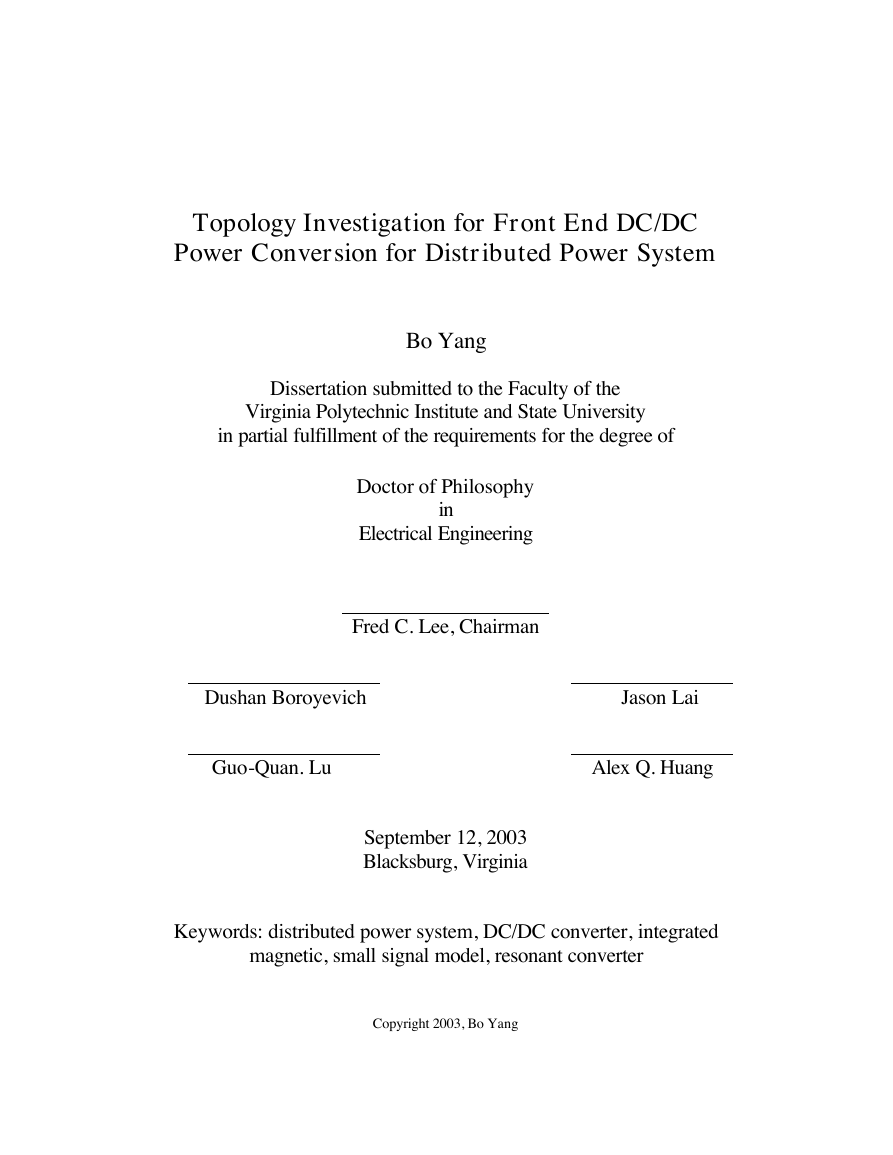
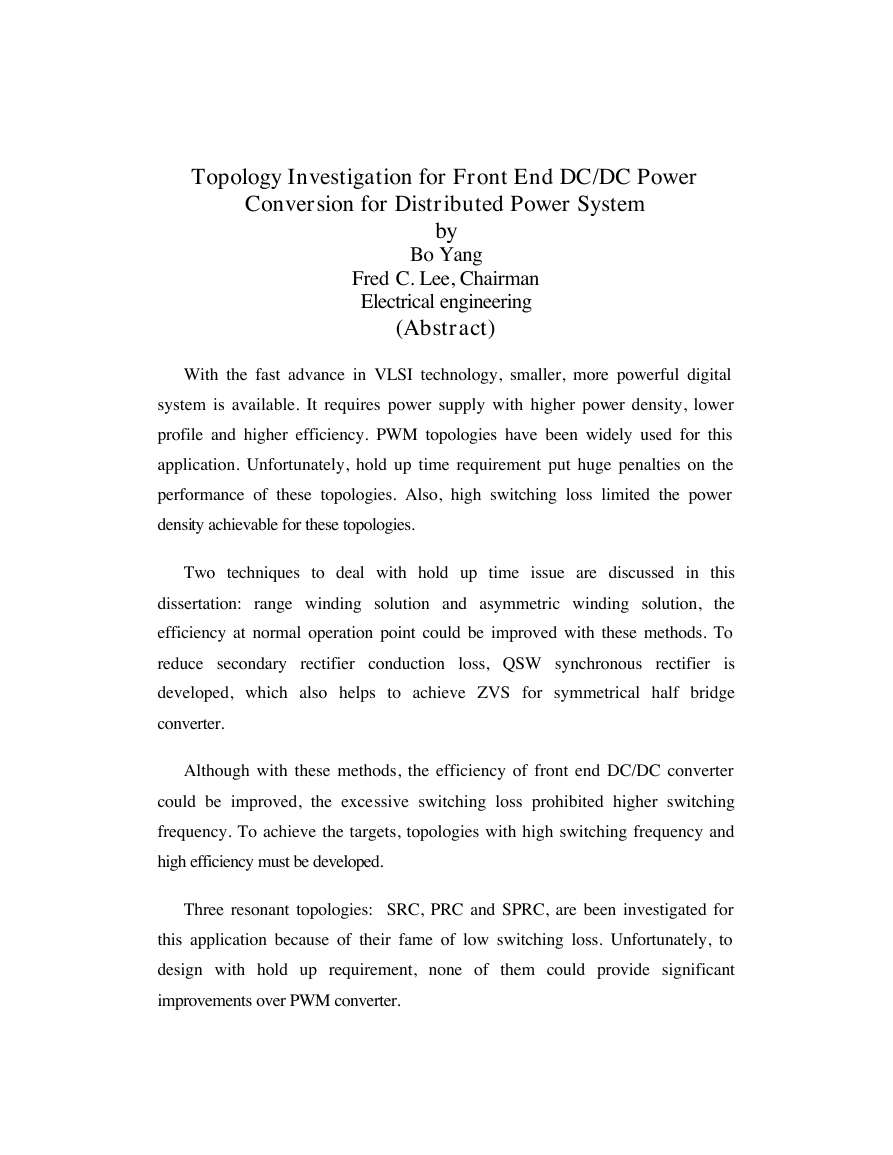
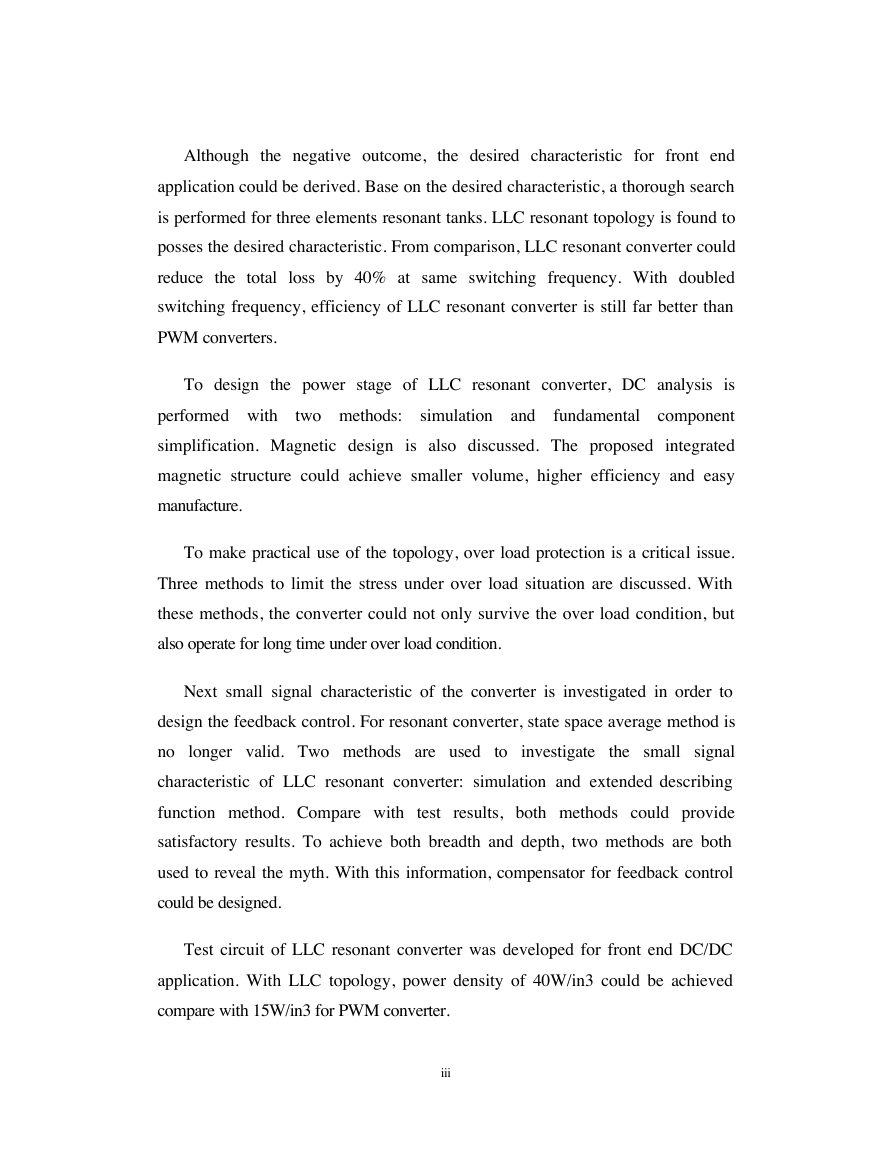

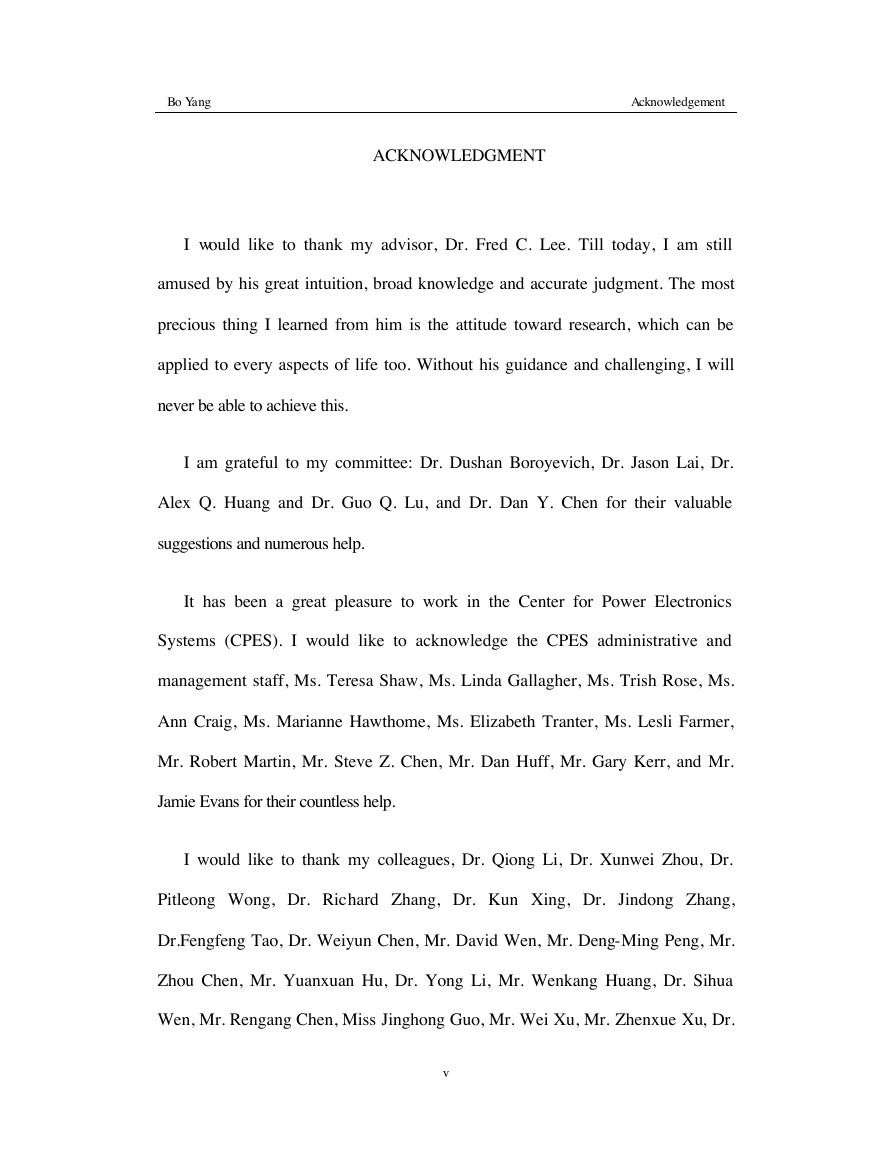
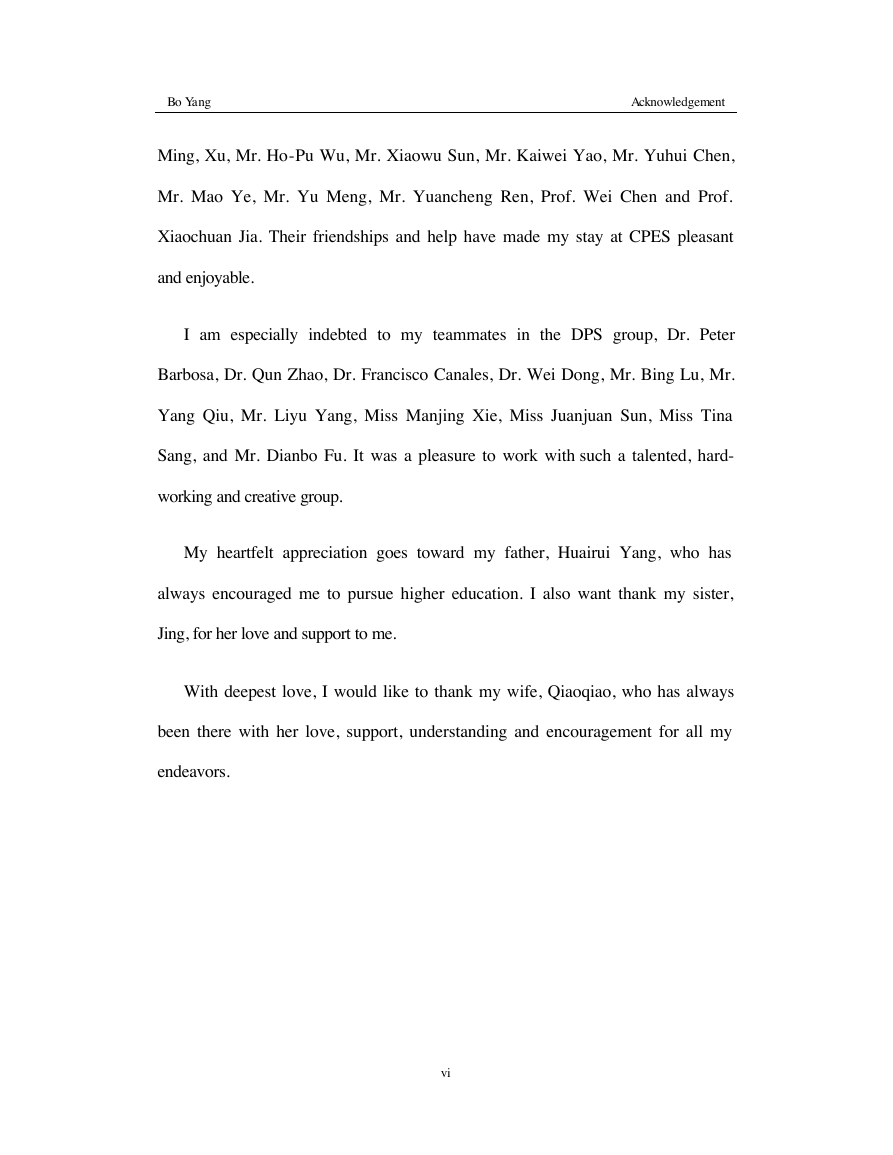

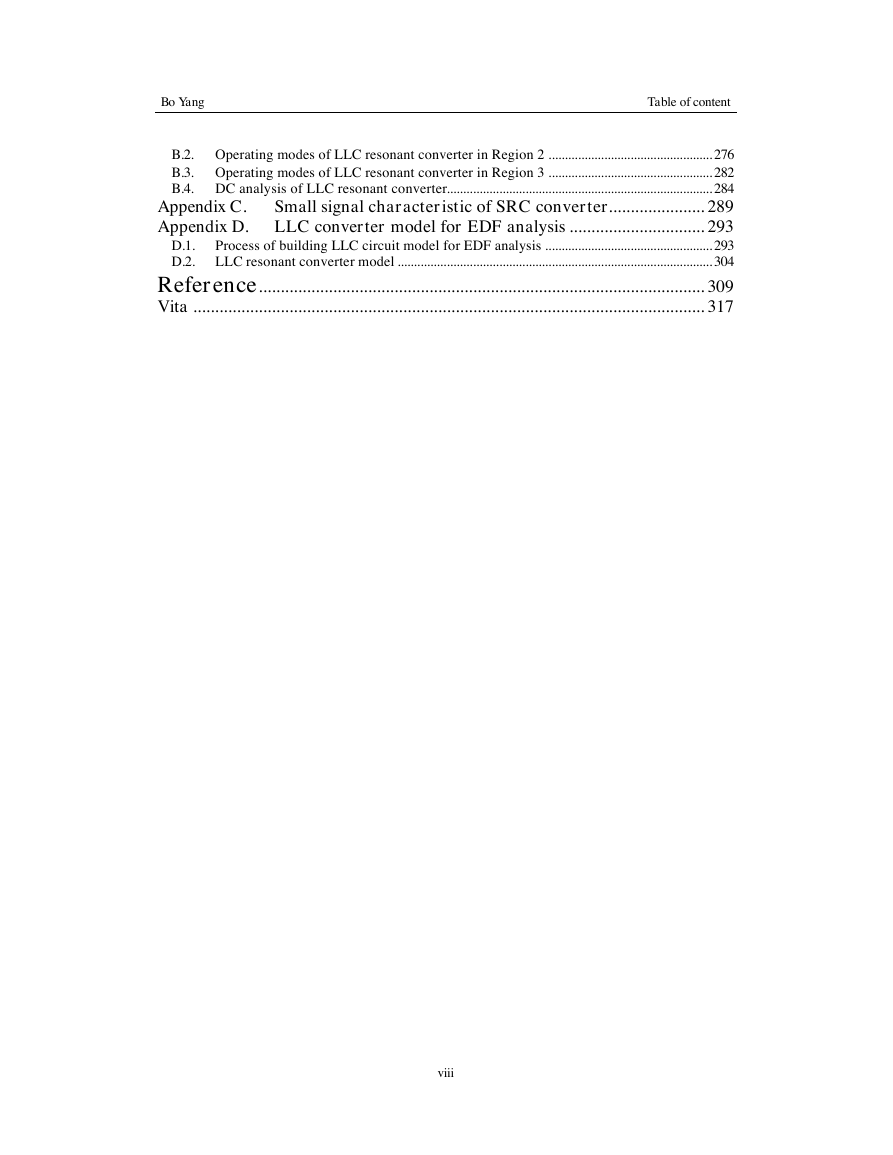








 2023年江西萍乡中考道德与法治真题及答案.doc
2023年江西萍乡中考道德与法治真题及答案.doc 2012年重庆南川中考生物真题及答案.doc
2012年重庆南川中考生物真题及答案.doc 2013年江西师范大学地理学综合及文艺理论基础考研真题.doc
2013年江西师范大学地理学综合及文艺理论基础考研真题.doc 2020年四川甘孜小升初语文真题及答案I卷.doc
2020年四川甘孜小升初语文真题及答案I卷.doc 2020年注册岩土工程师专业基础考试真题及答案.doc
2020年注册岩土工程师专业基础考试真题及答案.doc 2023-2024学年福建省厦门市九年级上学期数学月考试题及答案.doc
2023-2024学年福建省厦门市九年级上学期数学月考试题及答案.doc 2021-2022学年辽宁省沈阳市大东区九年级上学期语文期末试题及答案.doc
2021-2022学年辽宁省沈阳市大东区九年级上学期语文期末试题及答案.doc 2022-2023学年北京东城区初三第一学期物理期末试卷及答案.doc
2022-2023学年北京东城区初三第一学期物理期末试卷及答案.doc 2018上半年江西教师资格初中地理学科知识与教学能力真题及答案.doc
2018上半年江西教师资格初中地理学科知识与教学能力真题及答案.doc 2012年河北国家公务员申论考试真题及答案-省级.doc
2012年河北国家公务员申论考试真题及答案-省级.doc 2020-2021学年江苏省扬州市江都区邵樊片九年级上学期数学第一次质量检测试题及答案.doc
2020-2021学年江苏省扬州市江都区邵樊片九年级上学期数学第一次质量检测试题及答案.doc 2022下半年黑龙江教师资格证中学综合素质真题及答案.doc
2022下半年黑龙江教师资格证中学综合素质真题及答案.doc